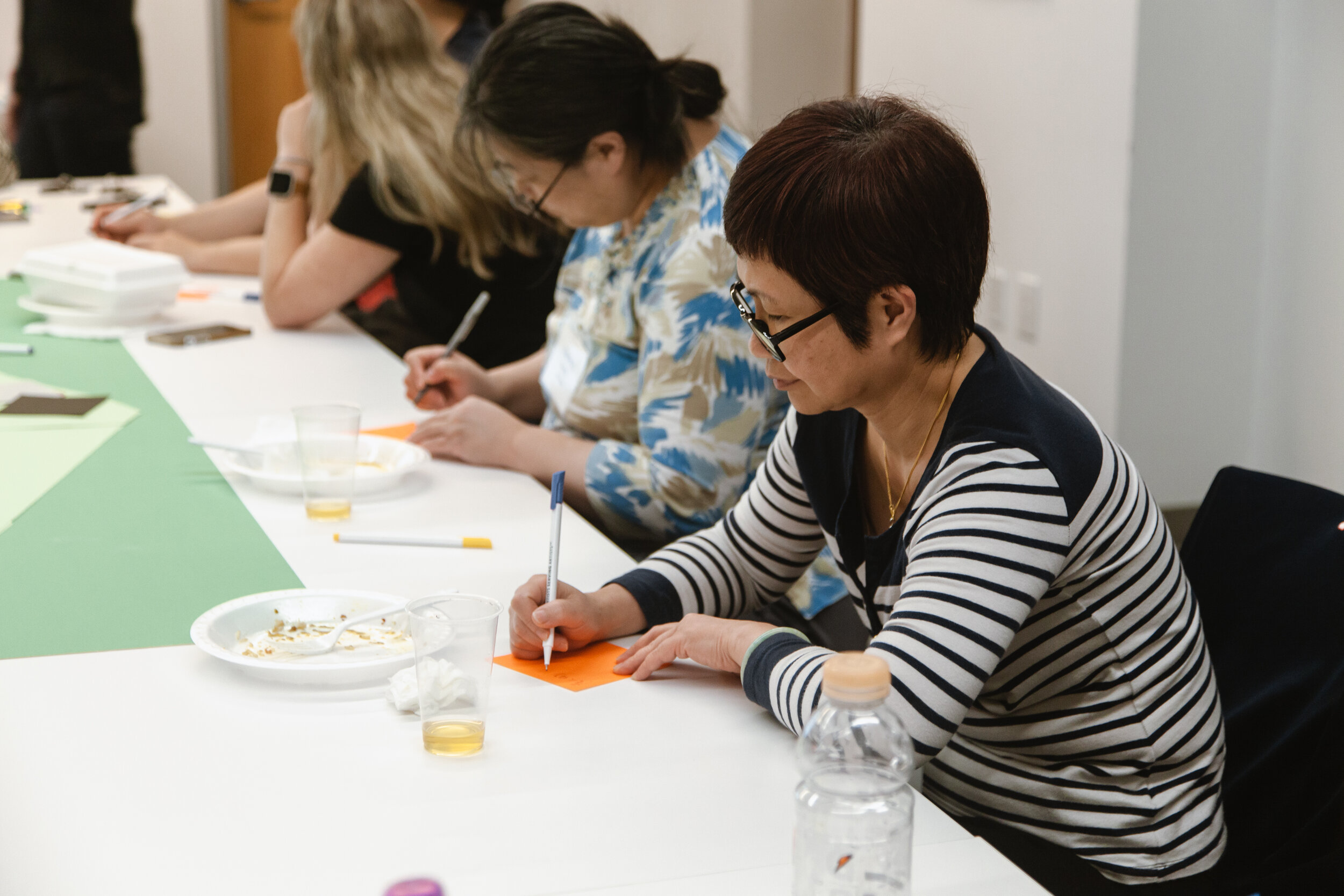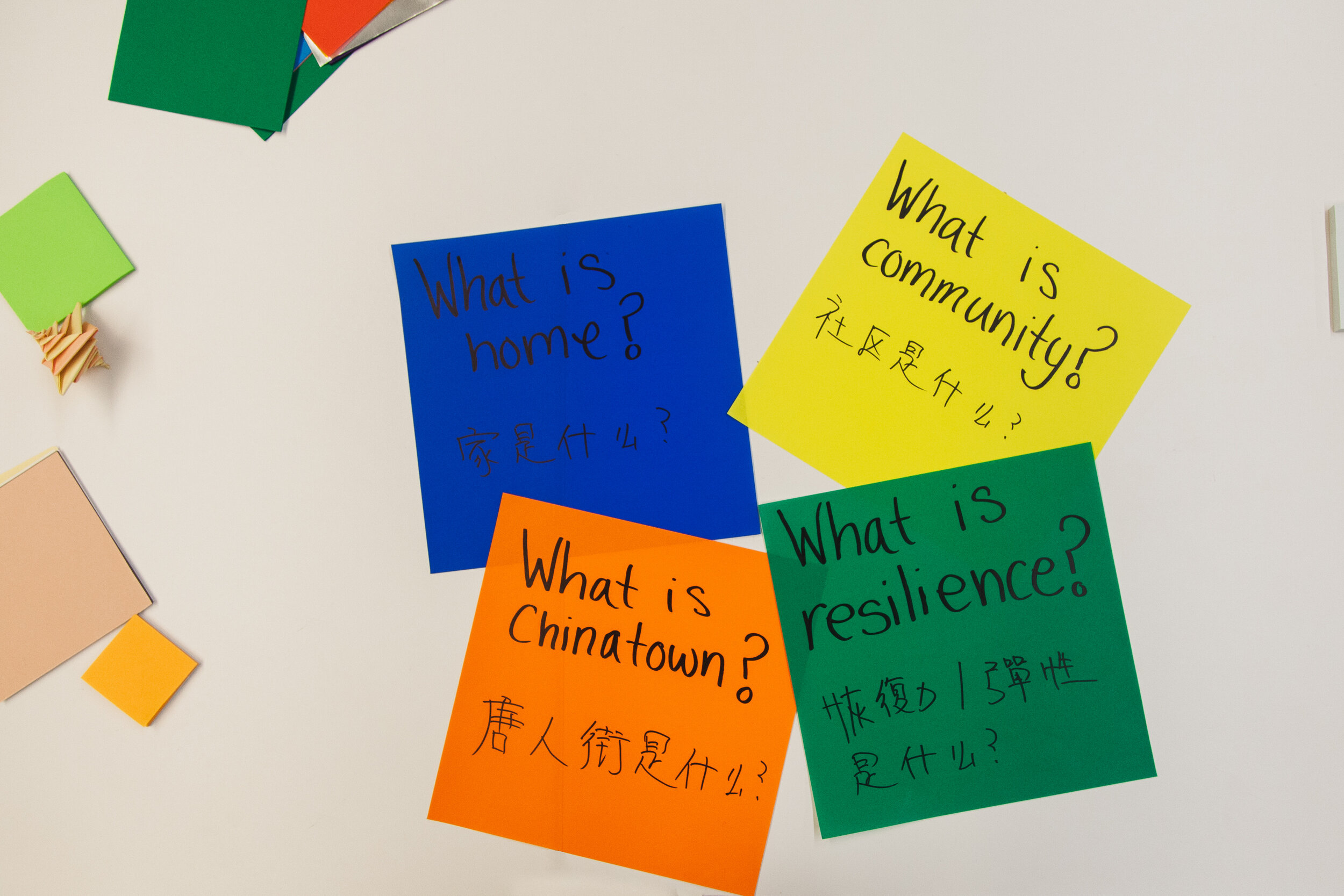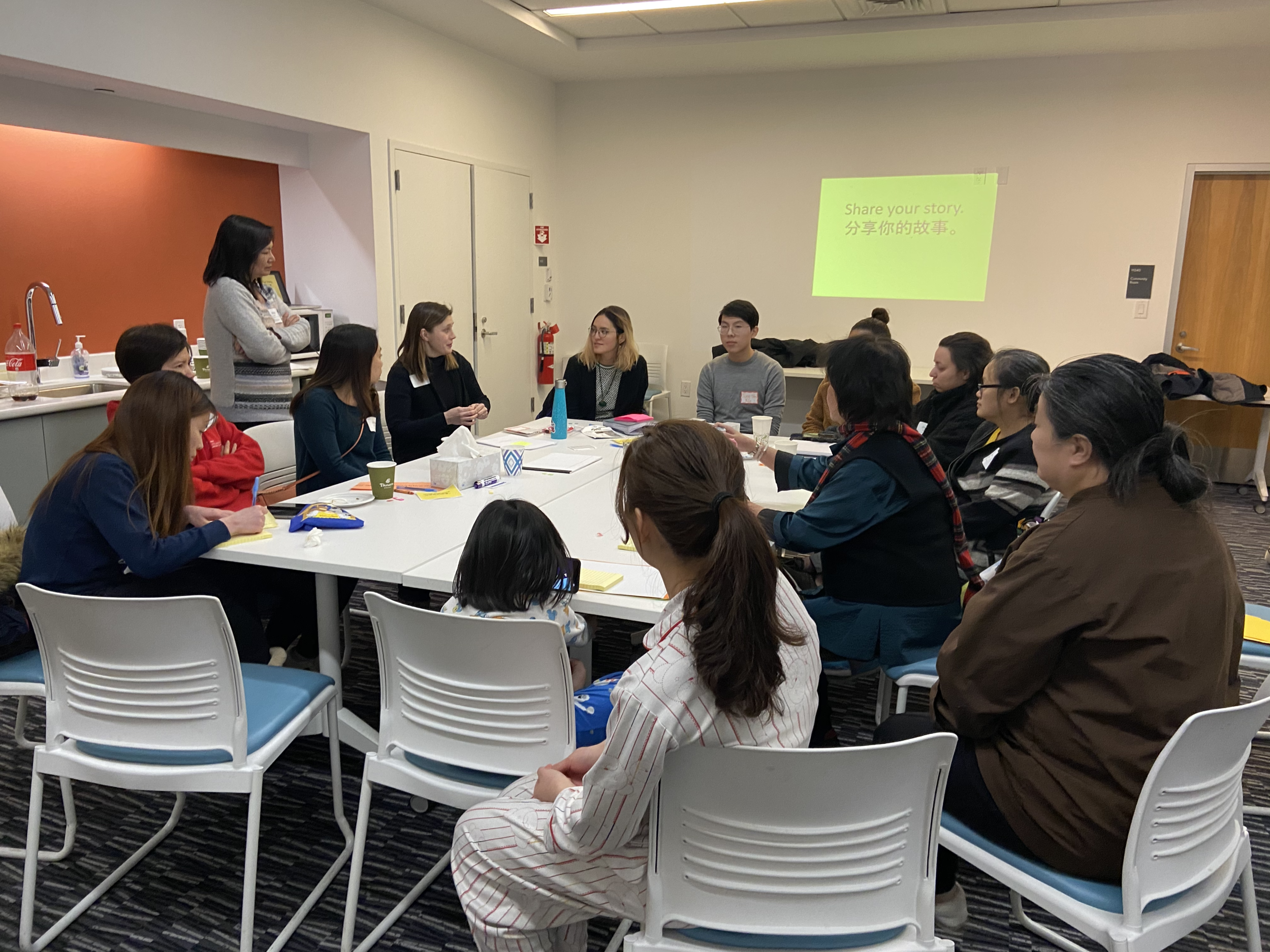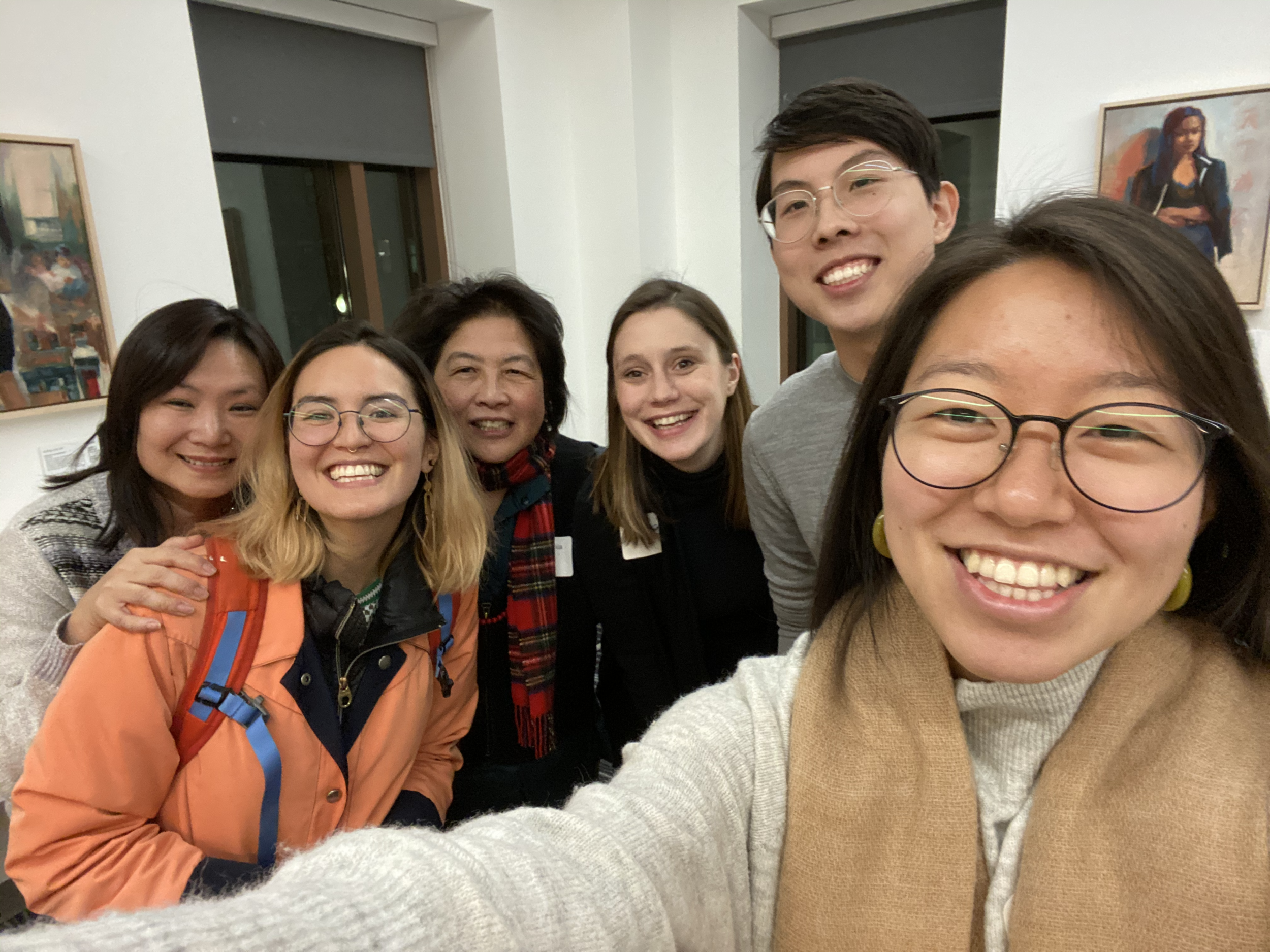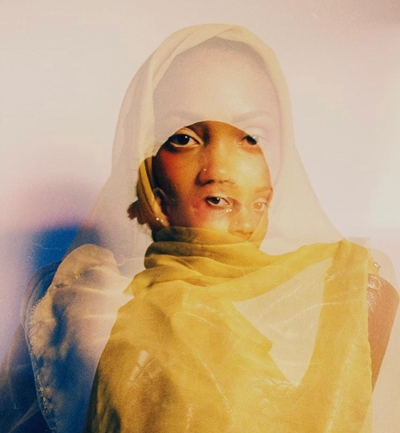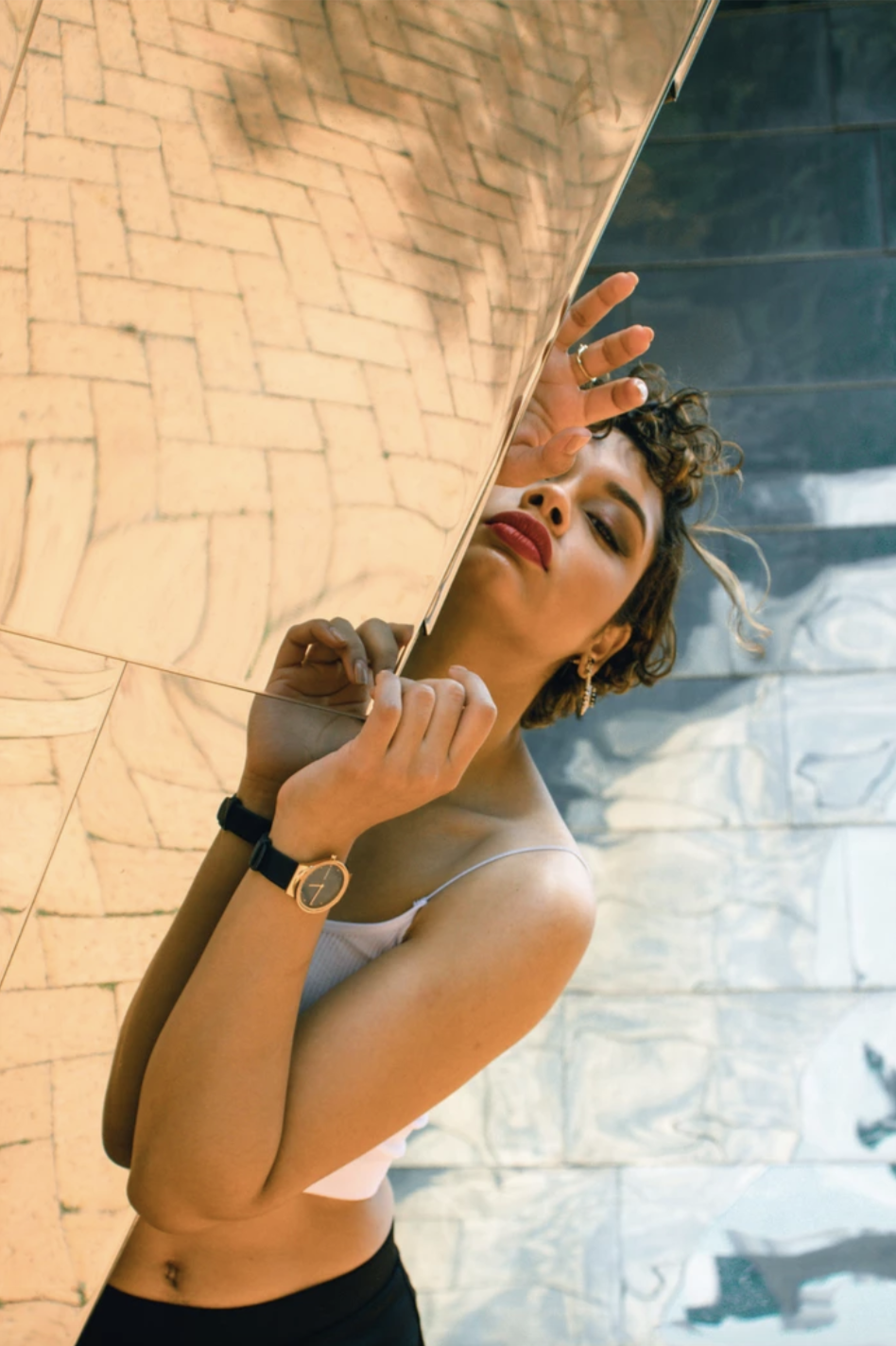Interviewed by Christine Nguyen and edited for clarity by Cathy Ching.
“I’ve always loved visiting Chinatown and the energy of it. After this project, I realized that it was a community of activists, artists, and families.”
Gianna Stewart, creator of Hudson Street Stoop: Storytell and Sway
ACDC’s public art initiative, Hudson Street Stoop, engages Chinatown residents and local artists to create interactive, rotating public art installations every 18 months. In ACDC’s efforts to fight against gentrification, Hudson Street Stoop is a site-specific project in One Greenway Park that aims to honor the rich history of Boston’s Chinatown, amplify resident voices, and foster an inclusive space for everyone.
Hudson Street Stoop’s inaugural installation, Storytell & Sway by Gianna Stewart, opened in Chinatown in June 2021. Although Gianna’s proposal was selected in December of 2019, the project had to be put on hold for about a year because of COVID restrictions. When it came time to resume the installation process, a large team came together to help make Storytell & Sway possible: Riverdrive Designs, URSA Plasma, Surfzone Engineering, Central Mass Powder Coating, VMT Construction, Steve, Tim, and Monica, and Bill, Chris, and Edwin of Toledo Construction.
Growing up, Gianna has always embraced her artistic side and fondly recalls drawing with family members. Gianna especially looks up to her grandfather as a creative inspiration, who draws and makes art with wood burning, which involves creating a design on wood with an electrically heated tool. In addition to creating art, Gianna enjoys being outdoors. Intertwining her two passions, Gianna created the vibrant Storytell & Sway as a visually stunning artwork, as well as a place for individuals and families to connect and enjoy the outdoors.
About Gianna
How did you get into public art?
My first public art piece was called Toll With Me. It involved hanging thousands of bells on a chain link fence. After that experience, I was totally hooked because the installation allowed me to observe interactions of anyone walking by, their impressions of the art, and I found that everyone feels ownership when something is in the public. It was such a different experience than creating something for a wall in a gallery. It made me realize that this is what I want to do.
What do you enjoy about creating public art? What can be frustrating?
Public art is site-specific. A piece grows from the site that it’s for, which I find exciting. Anything that you do in public art tends to be something that hasn’t been done in that way before which is exciting too, but you have to find the right people to talk to to ask the right questions to make things happen. I think the pace of figuring all that out is a challenge.
What types of projects are you drawn to or enjoy doing most?
Any place that’s going to have people. I’ve had the chance to do stuff that’s a little more out of the way too where it feels like you’re responding more strictly to the site and less to the viewers who are going to be around it all the time. I think places that are more active are definitely of interest.
A video from the Hudson Street Stoop crowdfunding campaign to support free, community programming.
About Hudson Street Stoop
How did you come up with the idea of Storytell & Sway?
The process for the call for artists was really wonderful. It gave short-listed artists the opportunity to have a community input session and hear from residents what they wanted to see in their park [on Hudson Street]. The main takeaway from that event was people wanted a space where they could play - both kids and adults. There was a lot of talk about how it was mostly a space for dog owners and they wanted a way to intervene in that somehow - to still have it be for dog owners but also be family-oriented.
I mulled over these considerations, and while researching, I read Cynthia Yee’s stories on Hudson Street Chronicles that describe the Hudson Street that existed before the highway was built. It sounded like Hudson was the front porch of Chinatown. Something clicked. I loved swinging on my front porch swing as a kid and thought that’s what was needed to draw people to the grass.
Gianna collaborating with Chinatown residents, shown below.
How did you choose the color yellow for Storytell & Sway?
When I first saw [the park], it was a time of year when it was really gray and I thought, it needs something bright, something that draws you in. And, there’s also the cool vantage point of anyone in apartments higher up looking down on the piece. The thought was to evoke a sunflower popping out of the grass.
Where did the idea to inscribe resident stories and quotes come from?
The idea to put words into the benches developed as it became a place for storytelling. Cynthia Woo at Pao Arts connected me with Cynthia Yee who of course has amazing stories like the Hudson Street Chronicles. We chatted and had this idea that she would help facilitate storytelling sessions with folks who currently live on Hudson Street. So many neighbors that live on Hudson Street came out and were incredibly generous volunteering their time, sharing their stories, knowing that they would be used for the piece. Volunteers including Crystal Bi, Lily Xie, and A-VOYCE Youth helped document the stories. Tidbits from those stories were selected for the benches. I really wanted the benches to have this sense of enveloping the viewer in stories- like when we were all in that room together, hearing overlapping languages and timelines.
What were some challenges of this process?
We were ready to go last spring and everything just had to pause. We didn’t realize it would be an entire year that we would pause but it was. It kind of worked out because when we picked it back up, the world started to be opening a little bit more, with an emphasis on outdoor activities, and the benches were spaced for social distancing. “A pause is needed” was a tough conversation but a really important one to have.
Hudson Street Stoop: Storytell and Sway
On Chinatown
What was your previous impression of the neighborhood? How has it changed since making Storytell & Sway?
I’ve always loved visiting Chinatown and the energy of it. After this project, I realized that it is a community of activists, artists, and families. I have a totally different sense of Chinatown now that I hope everyone can have. The best part has been getting to know the Chinatown community.
What is your favorite aspect of Chinatown? Favorite place to visit?
I love the rhythm of Chinatown. There is constant activity, from an early morning exercise group in the park, to checkers tournaments, to a bustling restaurant scene. There are just cool little pockets everywhere you wander. ACDC’s Chinatown Backyard, on Hudson Street is a spot that I always like to visit when there’s arts programming happening.
“This is what I want to be doing.”





